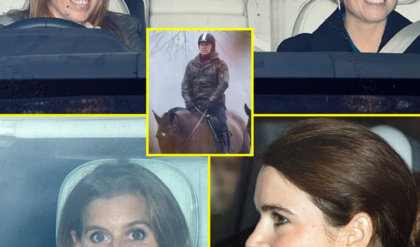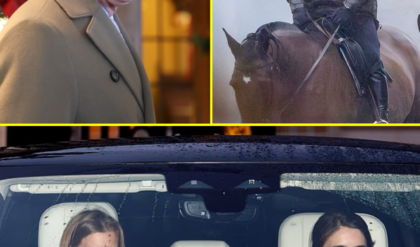There are plenty of haunting scenes in Ari Aster’s 2019 daylight horror Midsommar, whether it be people throwing themselves from a high place, a girl killing herself and her parents, or horrific mushroom-induced hallucinations. Midsommar is full of rituals and traditions of the Swedish Hårga people, an expert on which was consulted in the making of the film.

Everything from the runes scattered throughout the village to their elaborate feasts that are consumed via communal dining, their oracle, Ruben, and even the more violent aspects of their lifestyle are all taken from true accounts. Hårga is a town in Sweden, and it has a dark history all its own, beyond just its connection to Midsommar. There’s an old Swedish folk song that is sung by people of all ages, even children, that has an underlying thread of menace.
Nick Cave during his show in Krakow “Let’s do one thing film me for 30 seconds, but then put the fking phones away”
In Midsommar, Dani (Florence Pugh) becomes beloved by the Hårga people, ultimately being crowned their May Queen during midsummer celebrations – the Swedish occasion at the high point of the summer. A maypole is erected, and the people dress in traditional white folk attire and dance, eat and drink the day away.
Some of the darker traditions in the film include the senicide of two older Hårga people as part of the circle of life that the people live by, which is said to come from the mythical practice of Ättestupa, but it isn’t clear whether this is a still a tradition in some parts of Sweden. The other particularly jarring scene comes at the end and is one of the most memorable scenes in recent cinema.
The final scene sees Dani completely indoctrinated by the Hårga lifestyle, having been dressed in the now iconic flower cape and crown, and is eager to get the traditional sacrifice of nine of the community underway. One of the nine is Christian, her now ex-boyfriend, who has been paralysed and stuffed inside a bear’s carcass – symbolising various things, including masculinity and ferociousness, things the Hårga want to eliminate.
Christian sits in the canary yellow wooden hut, unable to move, along with eight others as they accept their fate, being set ablaze for the community to watch and pray. The Hårga are seen to move ritualistically and chant and sing whilst the hut and its contents go up in flames, and Dani’s characteristic facial expression turns slowly from sad, reflective and helpless to happy, vindicated, and perhaps slightly menacing.
About this incredibly memorable and carefully constructed scene, Florence Pugh told GQ: “A few scenes before, you clearly saw that she wasn’t there anymore and that she’d had a psychotic break, and you could distinctly notice that she was gone. Which made all of the decisions that happened in the last ten minutes even more heartbreaking because you knew that she wasn’t really making them.”
Adding, “And so the ending of the film, for me, made it easier because I knew that she wasn’t there. I actually played her as a child in a lot of the scenes at the end, some of which got cut. I wanted her to be excited by the fire, I wanted her to be excited by the cracks and the blazes and the colour of the sky, and that was something that I was channelling.”
Unsurprisingly, Pugh still thinks about Dani and that final scene a fair bit, just like the rest of us. She continues: “But now that those scenes are gone, it’s quite interesting to see how people will perceive that she’s been twisted or if maybe she’s made that decision.”
The final scene of Midsommar leaves us wondering whether it was the right or wrong thing – Christian clearly deserved punishment, but was this sacrifice right? Pugh goes on: “So I don’t know if it’s a happy ending. I’ve thought about it since and… [Long pause] In all the other characters that I’ve played, I’ve never worried about them afterwards. I always let go of my characters. I don’t carry them. Dani is the only one that I’ve come back to and I’ve felt really sad, and I felt like I let her down. I feel like I’ve left her in that field.”
On that full circle feeling of this iconic scene, Ari Aster told Vox: “We begin as Dani loses a family, and we end as Dani gains one. And so, for better or worse, they are there to provide exactly what she is lacking, and exactly what she needs, in true fairy tale fashion.”
And that’s how it feels – Dani has found her place. But at what cost? This is what makes the scene so memorable, the way it haunts you long after the credits roll.



